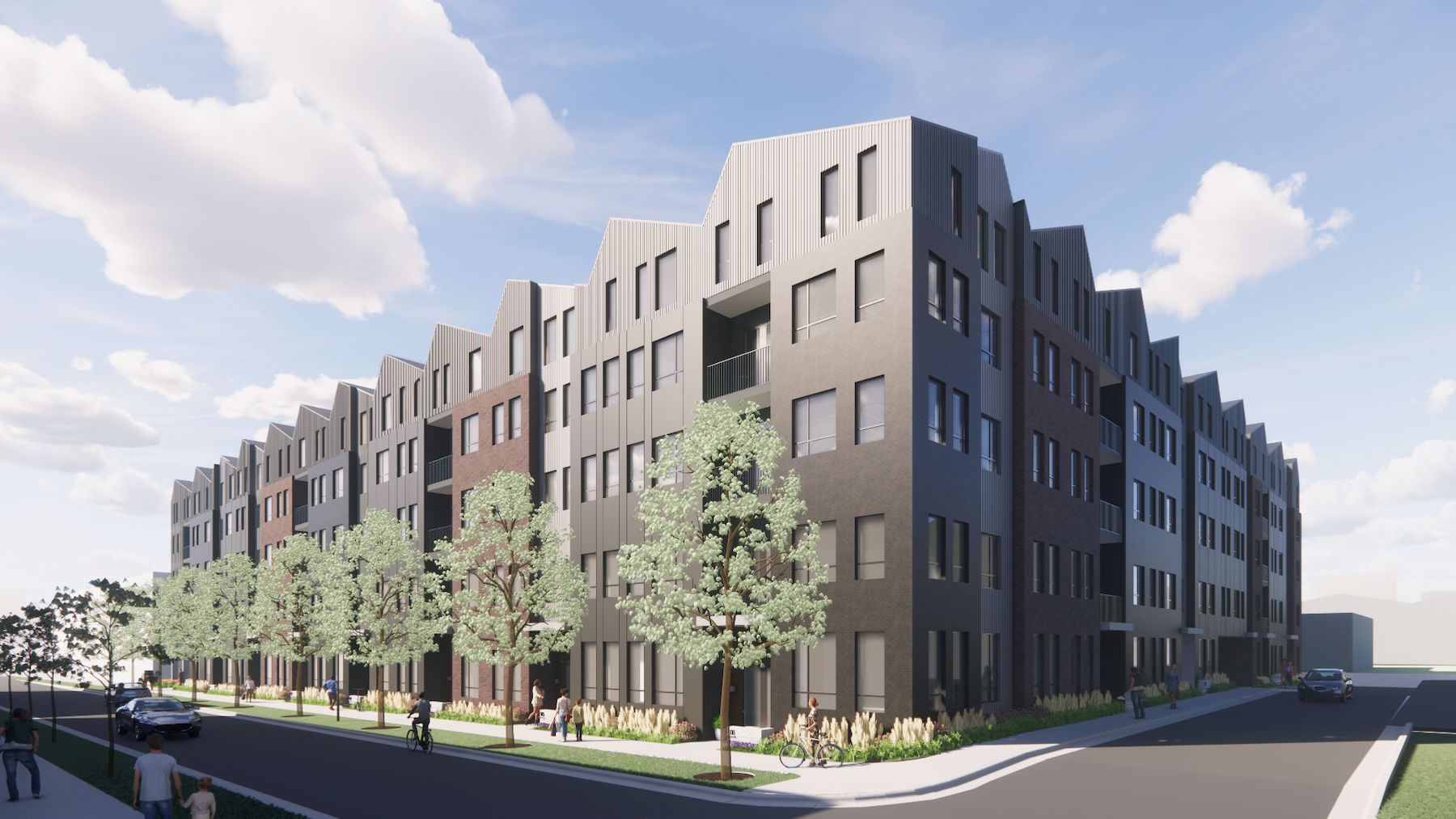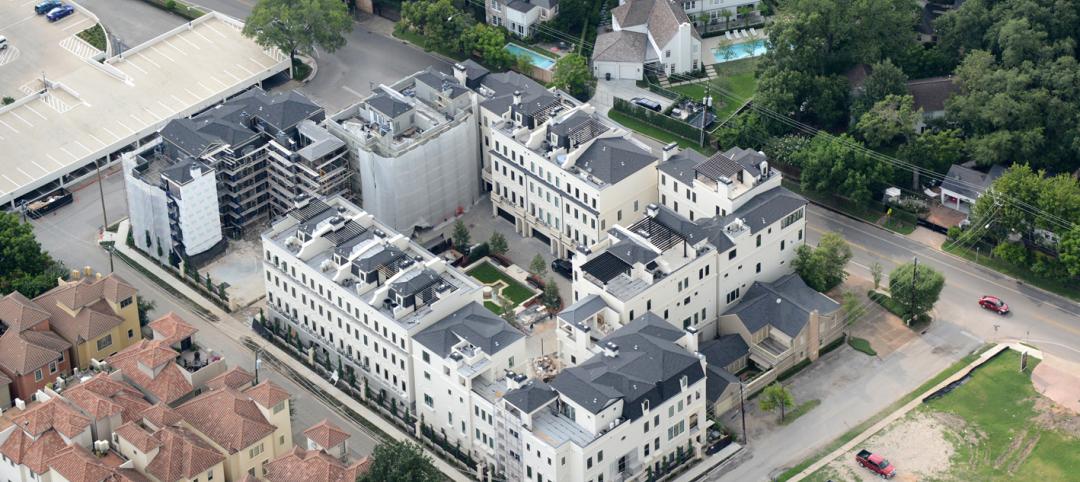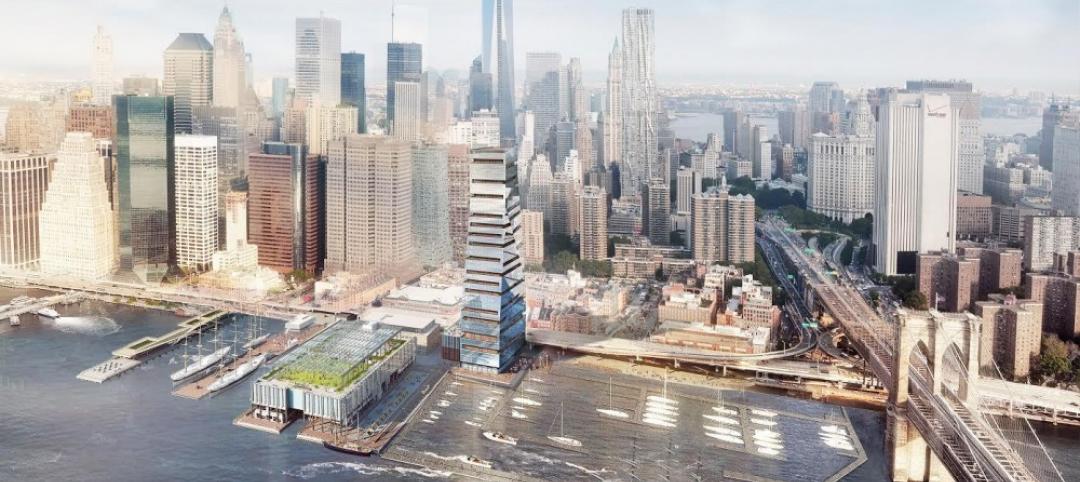As the coronavirus pandemic has subsided, investors and developers have shown renewed interest in the student housing sector. One design firm that has been capitalizing on that demand is Austin, Texas-based Rhode Partners, whose recent projects have included nine off-campus student housing buildings, with two more under construction in Austin and Columbus, Ohio, that will be completed by the summer of 2023.
Also in the works are three towers in Austin, each 30 stories tall, that when they’re delivered in 2025 and 2026 will fall in line with that city’s “upzoning,” which raised the height limit for student housing to 300 feet, from 175 feet. Robert Tait, AIA, LEED AP, a Director with Rhode Partners, says that Austin has long encouraged more development so that students could live closer to campuses, dating back to the passage a dozen years ago of its University Neighborhood Overlay Plan.
As has been the case for a while, the success of any student housing project usually rests with the amenities it provides. Tait confirms that it’s still a nuclear arms race out there among competitors, and Rhode Partners’ buildings include rock climbing, sand volleyball, and podcast spaces. Rhode, though, also showcases its buildings’ design and amenities that promote wellness and communal living. “Students crave community,” says Tait.
THE BIGGER, THE BETTER
Last March, Associated Builders and Contractors gave its Pyramid Award in Construction to the Rhode-designed Torre Apartments, an 18-story student housing tower located in the heart of the University of Texas at Austin’s West Campus neighborhood. The building’s tiered composition—including its 62-degree setback on the north side—represents a design response to specific zoning constraints and program requirements. Inside, corridors were removed at alternating levels at the townhouse tiers to create more spacious living areas and maximize rental square footage.
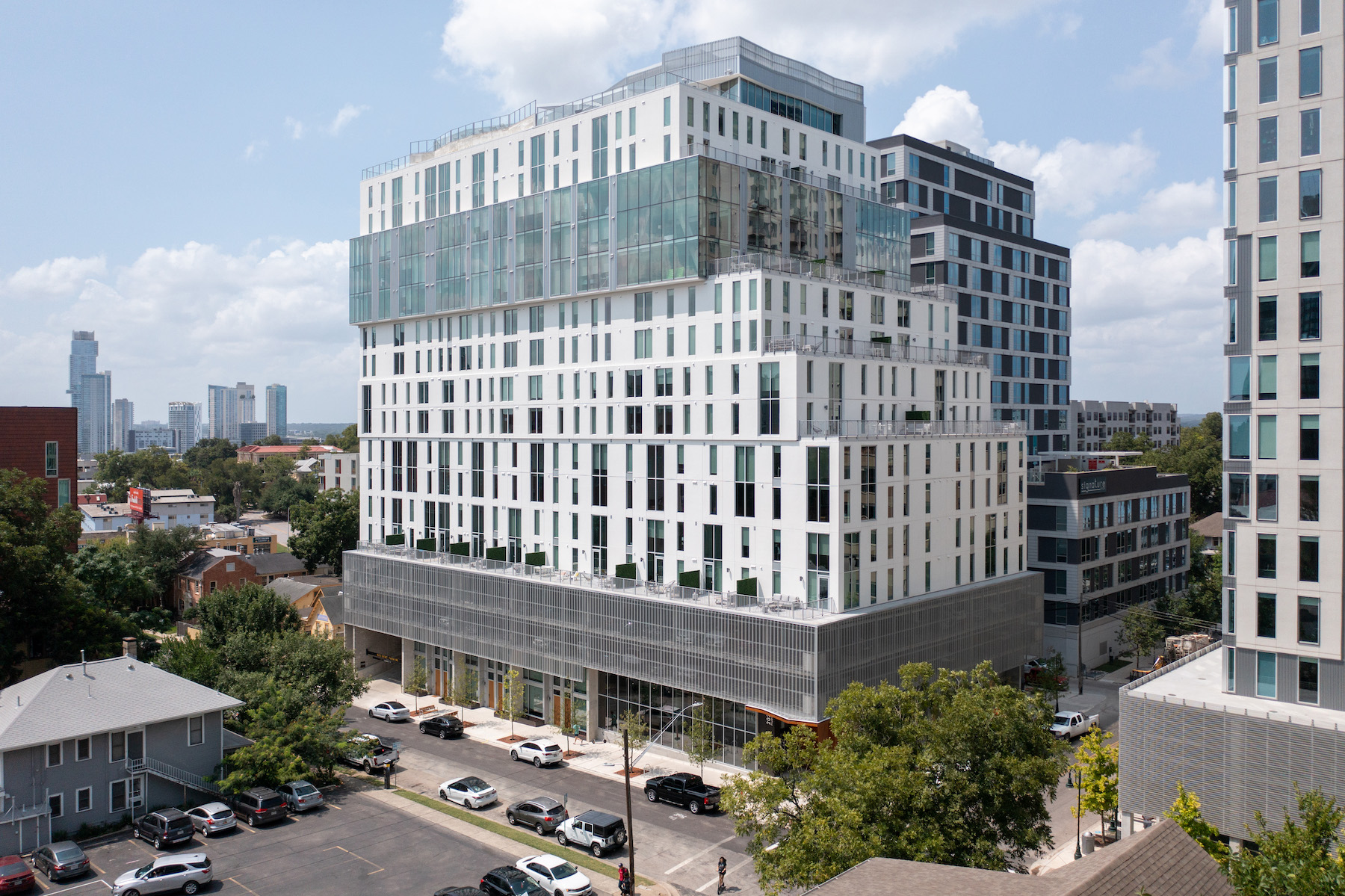
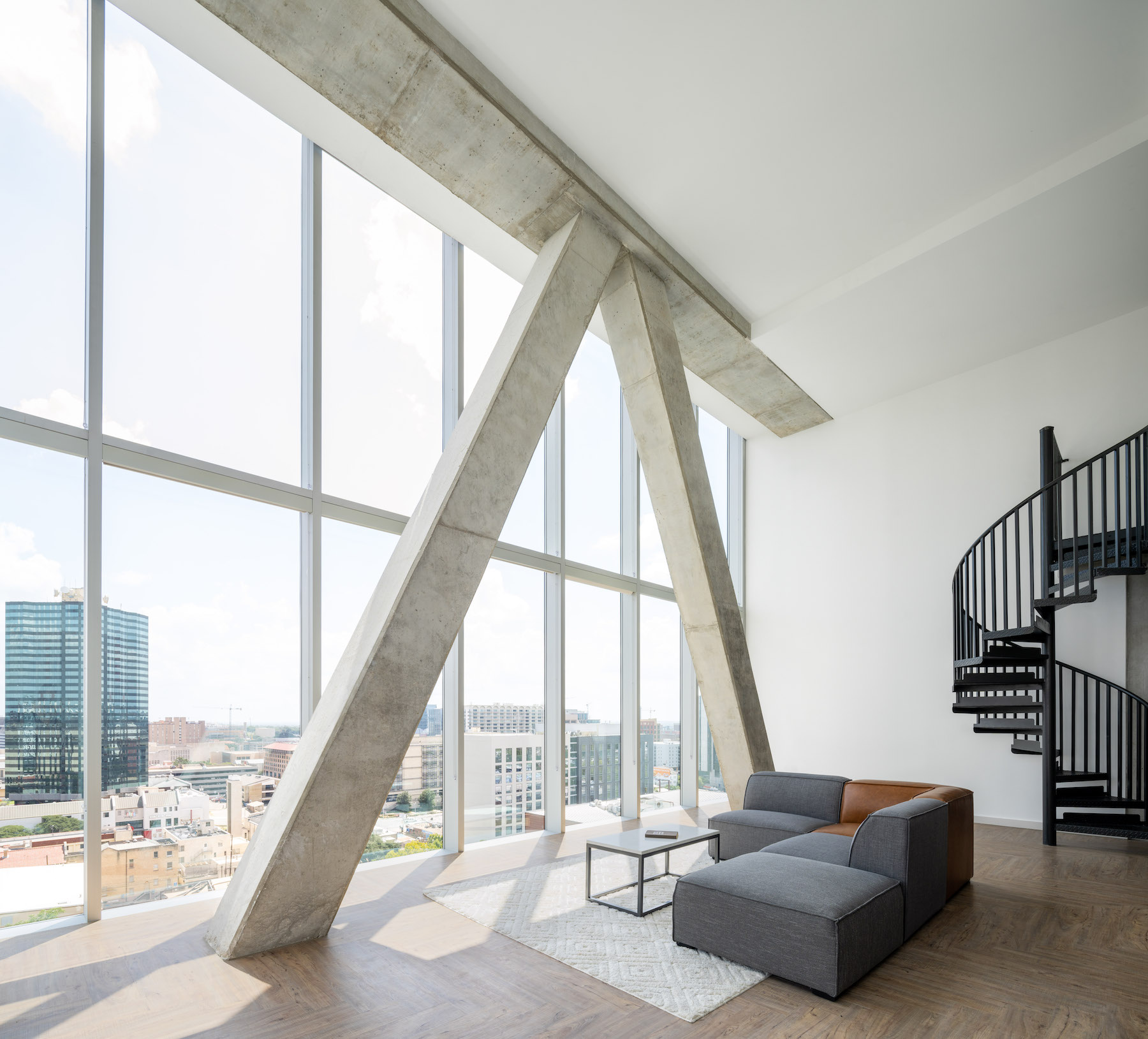
Under construction in College Station, Texas, is a 300,000-sf 197-ft-tall Rhode Partners-designed building whose 19 stories will offer 298 housing units with 802 beds. Its design is informed by dramatic, rounded street corners on the north, west, and east sides that help create an undulating façade. At level seven will be an amenity deck with an open courtyard and pool. On the ground floor will be the University Student Lutheran Center, study and conference rooms, a fitness facility and clubhouse.
This project’s Building Team includes LEVY (interior design), Rogers O’Brien (GC), RLG Consulting Engineers (SE), VE Consulting Engineers (MEP), Jones Carter (CE), ECS (geotechnical engineer), and InfiniSys (low voltage).
In Columbus, Ohio, where Rhode Partners first designed a student housing center in 2014, the five-story Columbus Apartments is under construction. Its 228,000 sf will include 143 housing units ranging from studios to five bedrooms. Its amenities will feature a pool deck, café, spa, fitness center, clubroom, and study rooms. The building has been designed to integrate into the surrounding residential neighborhood with a brick, metal paneling, and wood cladding façade with large picture windows and modern fixtures.
Elford, Inc. is the GC on this project, and is working with RLG Consulting Engineers (SE), McMullen Engineering (MEP), EP Ferries & Associates (CE), Geotechnical Consultants (geotechnical engineer), MKSK (landscape architect), and InfiniSys (low voltage). Austin-based Parallel is the developer.
Tait says that Rhode Partners is looking for student housing design opportunities in other markets. In its pipeline is a tower in Knoxville, Tenn., that is slated for completion in 2025. The student housing sector, he says, “is pretty exciting right now.”
Related Stories
Smart Buildings | Jan 7, 2015
Best practices for urban infill development: Embrace the region's character, master the pedestrian experience
If an urban building isn’t grounded in the local region’s character, it will end up feeling generic and out-of-place. To do urban infill the right way, it’s essential to slow down and pay proper attention to the context of an urban environment, writes GS&P's Joe Bucher.
| Jan 6, 2015
Construction permits exceeded $2 billion in Minneapolis in 2014
Two major projects—a new stadium for the Minnesota Vikings NFL team and the city’s Downtown East redevelopment—accounted for about half of the total worth of the permits issued.
| Jan 2, 2015
Construction put in place enjoyed healthy gains in 2014
Construction consultant FMI foresees—with some caveats—continuing growth in the office, lodging, and manufacturing sectors. But funding uncertainties raise red flags in education and healthcare.
Sponsored | | Dec 30, 2014
Case studies: Engineered wood brings cost savings, design flexibility across commercial project types
For commercial architects facing increasing pressure to design innovative structures while simultaneously cutting costs and accommodating tight deadlines, engineered wood systems are providing a welcome solution.
| Dec 28, 2014
Robots, drones, and printed buildings: The promise of automated construction
Building Teams across the globe are employing advanced robotics to simplify what is inherently a complex, messy process—construction.
| Dec 28, 2014
AIA course: Enhancing interior comfort while improving overall building efficacy
Providing more comfortable conditions to building occupants has become a top priority in today’s interior designs. This course is worth 1.0 AIA LU/HSW.
| Dec 28, 2014
6 trends steering today's college residence halls
University students want more in a residence hall than just a place to sleep. They want a space that reflects their style of living and learning.
| Dec 22, 2014
Studio Gang to design Chicago’s third-tallest skyscraper
The first U.S. real-estate investment by The Wanda Group, owned by China’s richest man, will be an 88-story, 1,148-ft-tall mixed-use tower designed by Jeanne Gang.
| Dec 17, 2014
ULI report looks at growing appeal of micro unit apartments
New research from the Urban Land Institute suggests that micro units have staying power as a housing type that appeals to urban dwellers in high-cost markets who are willing to trade space for improved affordability and proximity to downtown neighborhoods.
| Dec 15, 2014
SHoP Architects plans to turn NY's Seaport District into pedestrianized, mixed-use area
The scheme includes a proposed 500-foot luxury residential tower that would jut out into the harbor, extending the Manhattan grid out into the waterfront.


